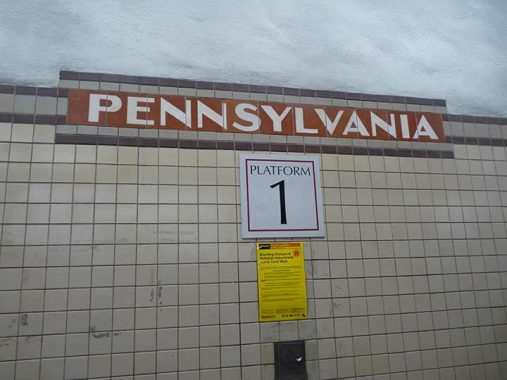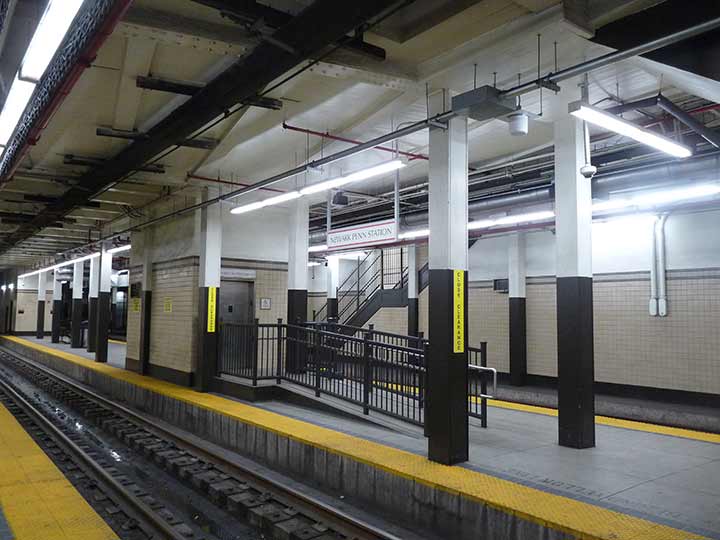
NEW York City’s subway system is among the world’s largest but is largely stuck in time, like a fly in amber. Because of construction safety precautions, environmental concerns, $$$ and union rules among other reasons, it now takes 20-25 years to build an extension such as on 2nd Avenue between 61st and 96th Street. In other parts of the world…such as right here in the USA in Los Angeles, it takes much less time. There needs to be political and public will to build.
Over the years I have largely been silent about a couple of other nearby subways not an official part of NYC’s such as the PATH train which connects Herald Square with Hoboken, Jersey City and Newark. It has been in operation since 1908 and was originally called the Hudson and Manhattan Railway. Another is Hudson-Bergen Light Rail, not a subway at all but a surface line connecting Hoboken, Jersey City, Bayonne, Weehawken and other locales. I rode it as recently as December 2024, and some of that will leak out eventually.
In March 2021 I took the PATH to Penn Station. What, you say? Penn Station? Newark Penn station. Things can get confusing. I then took Newark Light Rai , which is separate from and not connected to the HBLR at all. It was constructed between 1935 and 1940, with an extension to Grove Street in Bloomfield in 2002, and used oldie but goodie PCC cars built in the late 1940s all the way to 2001. Again, I obtained plenty of photos and will parcel them out gradually.
Newark Light Rail was originally called the City Subway, but that’s something of a misnomer as only the part beneath Raymond Boulevard in downtown Newark is actually underground. It rises to the urface and runs at grade or an open cut north and west beginning at Orange Street. To me the line behaves like the Green Line in Boston, which is underground downtown but then runs on the surface or open cut in three branches. Other Boston lines, Blue and Orange, behave more like conventional subways, with the Red taking on a suburban commuter feel, like our LIRR or Metro North. Pictured above is Newark Light Rail’s terminal station at Newark Penn.


Newark Light Rail has preserved its original 1930s tiled station signage in the underground stations, with new signage on the above ground. There quite resemble the tiled signage of NYC’s Independent Subway opened from 1932-1940, but while IND signage is multicolored, brown and beige are the rule in Newark.
Check out the ForgottenBook, take a look at the gift shop. As always, “comment…as you see fit.” I earn a small payment when you click on any ad on the site.
6/5/25


12 comments
“with an extension to Grove Street in Bloomfield in 2002”
Don’t forget the extension to Newark’s Broad Street NJ station in the mid 2000s, which was a lost opportunity. They did it halfassed and it has a sorry schedule, running much fewer trains on it than on the main stem, when they could have incorporated it into the system and not treated it separately. I take it to work and hate it with every fiber of my being. A true redheaded stepchild. A great example of doing transit wrong.
The Newark subway reminds me too of the Boston Green Line. Both cities had too many trolley lines concentrated in too few streets downtown . There are “forgotten” remnants in Newark of how the street trolleys went into the City Subway.
In your excellently angled photo, one can see a decently long platform to the left of the central elevator pillar. That platform is a huge waste of space, because it was used only when they would run 4- or 5-car trains, which they haven’t done for a very long time. Now the most they run are 2-car trains. In your photo one can just make out seating in the wasted-space platform. That seating was just recently removed. It makes me wonder if they have plans for that area.
All the reasons why the city cannot build new subway lines in anything approaching a reasonable timeline I subsume into the general category of Typical New York Incompetence.
Philadelphia has a subway-surface system from Center City (City Hall) through Philly Penn Station (30th St Station) serving branches in West Philly, with three other light rail lines converging at the 69th St. terminal of the Market-Frankford line.
San Francisco has its own Market Street light rail, a heritage line on the surface and a subway line to southwestern points in the city, and recently a different subway using light rail rolling stock opened, connecting Chinatown to the southeastern part of San Francisco.
Newark’s Light Rail/City Subway when originally built in 1935-40 followed the old Morris Canal right of way. That canal, which connected the Delaware and Hudson Rivers crossing northern New Jersey, was part of the 19th century’s canal building era. Railroads originally provided too much competition, causing the Morris Canal to close permanently in 1924. The City Subway’s downtown Newark portion also created a new street, Raymond Boulevard, on the old canal bed. The subway was designed with connections to take surface trolley routes off downtown streets. At three locations those old connections are still clearly visible – two ramps at Norfolk Street and Bloomfield Avenue respectively, and a railroad-type grade crossing at Orange Street; the latter is the only location on the original 1935-40 line that crosses a city street. The two more recent extensions, from Penn Station to Broad Street Station, and from Branch Brook Park to Grove Street in Bloomfield, have street running and grade crossings.
Raymond Boulevard was named for Thomas L. Raymond, who served two non-consecutive terms as Mayor of Newark, New Jersey, from 1915 to 1917 and again from 1925 to 1928, when he died in office. More information is on this link: https://en.wikipedia.org/wiki/Thomas_Lynch_Raymond
More information about the Morris Canal is here: https://en.wikipedia.org/wiki/Morris_Canal
It’s too bad that they didn’t try to give other major rail transfers on this is line besides Newark-Penn Station and Broad Street with the rest just connecting to buses.
Once I was skulking on the Penn Station wasted-space platform and saw a praying mantis. It had obviously got on the train at Branch Brook Park and got off in Penn Station. There are also house sparrows that live there, apparently without ever seeing the light of day, scavenging crumbs left by lazy idiot scumbags.
I read an account of canal commissioners touring the Morris Canal in Jersey City in 1913, when it was already moribund. They were concerned that the canal would be an expensive nuisance, a health hazard. There was a priceless description of how the local urchins treated the commissioners as they slowly progressed in their horse-drawn barge. Yelling “What is this, an Irish picnic?” as they threw horse manure at them.
The Mattapan Line (AKA Mattapan Trolley and historically the Ashmont–Mattapan High-Speed Line), in Boston still uses PCC cars.
It’s mind boggling that the IRT built the current Lexington Ave line and the 7th ave north of 42 st between 1902 and 1904. This was City Hall to 145 th and Lenox. I realize that union rules and safety were not paramount at the time and there were a lot accidentsm, but it took the MTA 16 years to build three stops on the 2nd Ave line.
Larry, the original line went from City Hall to 145th and Broadway, not Lenox Av beginning October 27,1904. The “East Side Branch” to 145th & Lenox opened just under a month later on November 23, 1904. The original line never ran along 7th Av north of 42nd St. It ran along Broadway. Construction started in 1900 not 1902.
The original line ran from City Hall up Lafayette St (then called Elm Place), up 4th Av (now Park Av and Park Av South) to 42nd St-Grand Central, it curved west along 42nd St to Times Square and then up
Broadway to 145th St.
The Lexington Av line north of Grand Central-42nd did not open until 1918. The 7th Av section south of Times Square-42nd opened in 1918. Construction on these sections were part of the Dual Contracts signed in 1913.